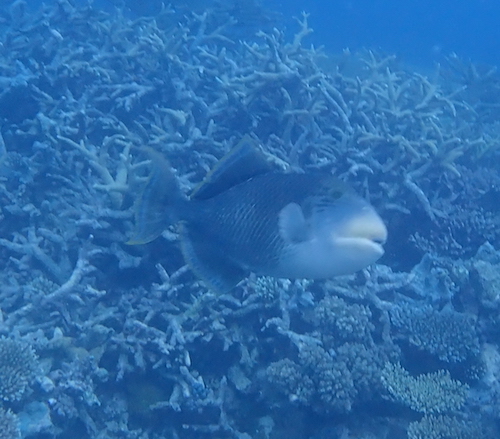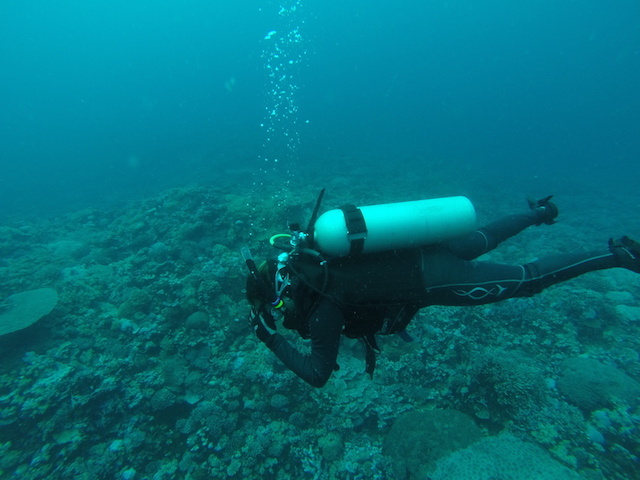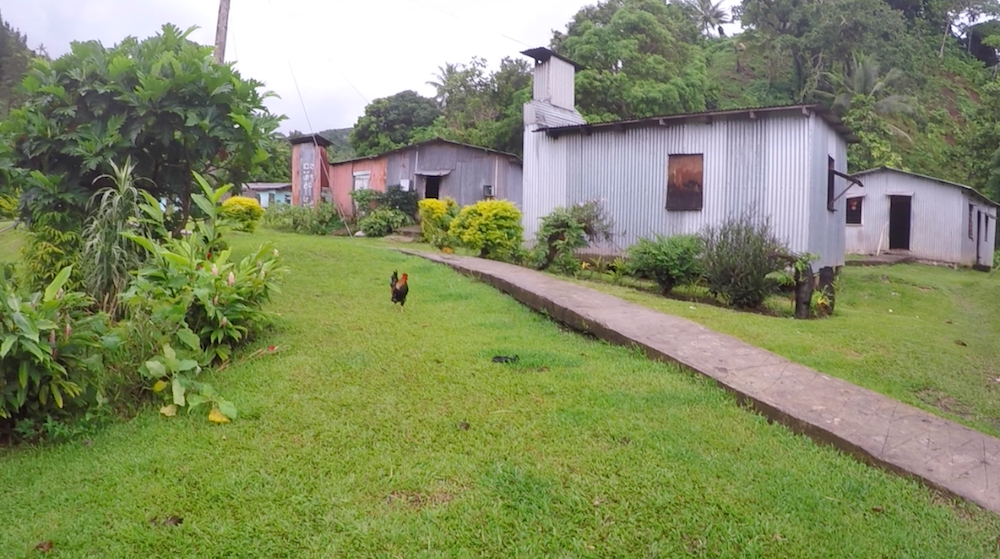Leading up to this trip, there was thing I was most excited to see: a manta ray. When we arrived in Fiji I had not been Open Water Certified just yet, so I had to miss out on the first trip out to Manta Reef, where supposedly the mantas are usually seen feeding. I was worried that the class would have seen the mantas, and we would not have another opportunity to see them for the rest of the trip. However, no mantas were seen, and we had one more chance to visit Manta Reef before we left.
Having finished my Open Water Certification and only two days left to go diving, I was certain that today would be the day I see a manta ray. Our first dive of the day took place in Manta Reef, and unfortunately there wasn’t a single ray spotted. The second dive took place at a passage away from Manta Reef. Thinking that all of our chances were blown, I was not really expecting to see a manta for the rest of the trip. During the second dive my dive buddy, Madeleine, pointed at a field of spotted eels, and seconds after I looked at the field, she pointed behind me and I could hear her yell “Greg!” through her regulator. I turned around to find a massive black mass which slowly spread its massive wings. I was looking at a manta ray. After its wings were spread, it slowly and majestically swam away while my heart felt like it was about to burst out of my chest with excitement. Even after surfacing, I felt as though I was on the verge of tears. It is an experience I will never forget, and hope to experience again one day.
– Greg












